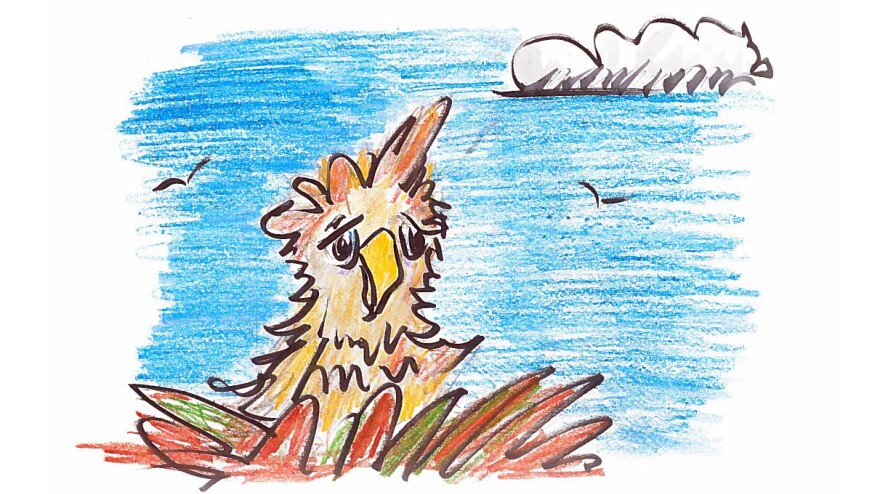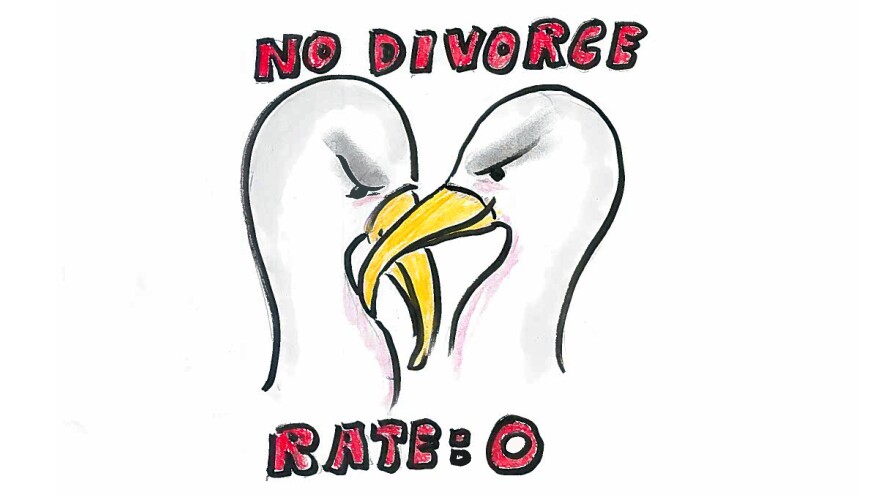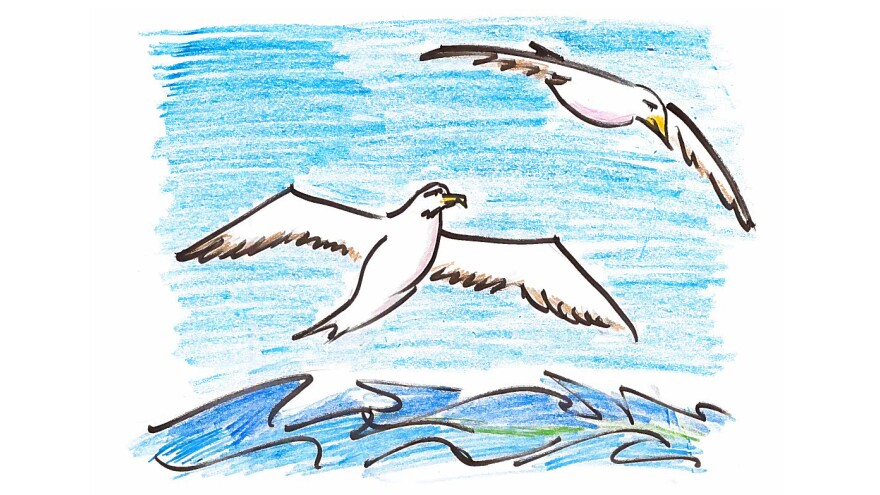There is love. And then there's albatross love.
In his new book, The Thing With Feathers, Noah Strycker says albatrosses have a knack for coupling. "These globe trotters, who mate for life and are incredibly faithful to their partners, just might have the most intense love affairs of any animal on our planet," he writes.
Noah knows "love" is a word normally reserved for humans. Technically, what albatrosses do is "pair bond." But call it what you will, he says — "to see what real devotion is like, you need to spend some quality time with an albatross."
They are seabirds. They spend 95 percent of their time sailing through the air for thousands, sometimes hundreds of thousands of miles. They fish. They rest on the oceans' surface. They can go for years never seeing land. But they are born on dry land.

The chick's parents build a nest near the place where they, in turn, had been born. Albatrosses lay one egg at a time. Once the chick's feathers grow in so it can stay warm, its parents fly off, coming back for occasional food deliveries. But typically the chick "spends a full nine months sitting alone ... in its nest, most of the time in quiet contemplation of its surroundings since it has no siblings."

It grows slowly. Then, one day, when it feels ready, it picks up, and with no instruction, it flings itself into the air and flies out to sea. It will stay out there for six years until it feels the urge to mate. Then all the albatrosses from its generation head back, one by one, to their native island — usually to a spot alongside the ocean where they land, gather and, one by one, they begin — to dance.
Noah writes, the "two birds face each other, patter their feet to stay close as they move forward and backward, each testing the other's reflexes, and point their beaks at the sky."
"Then, as they simultaneously utter a chilling scream, the albatrosses each extend their wings to show off the full 12-foot span, facing off while continuing to jockey for position. They touch beaks, throw their heads back again and scream."

For a long while they will dance with several partners, but gradually — it can take years to pick the right partner — they will find a particular favorite. Together those two continue to refine their steps, until, having "spent so much time dancing with that specific bird ... that pair's sequence of moves is as unique as a lover's fingerprint."
Now they are ready to mate.
It has taken 15 years to decide on a partner, but having decided, albatrosses don't switch. "It will generally stick faithfully with its mate until one of them dies, which might not be for another fifty years."
This is not true of most birds. In 1996, Jeffrey Black compiled a table of bird divorce rates for his book, Partnership In Birds. He collected data on 100 or so different species, all of which form long-term partnerships. "Slam-bang, thank-you ma'am" hookup types weren't included. Then he looked to see how often these birds break up before either one dies.

Flamingos, it turns out, are embarrassing. They break up 99 percent of the time.
The divorce rate for piping plovers is 67 percent. Ducks do better than humans. Human marriages (American ones) fail at a rate of roughly 40 percent (which is about equal to Nazca boobies). Mallard marriages are 91 percent successful.
The big shock was swans. Everybody, ornithologists included, figured swans would be at the top of the Most Faithful list. But they're not. They have a 5 percent divorce rate. So who's the champ? Do I need to say?

Albatrosses are 100 percent faithful.
That's not to say that albatross dads don't occasionally have a dalliance with ladies who aren't their mates. That happens. But the original pair stays intact — which is surprising when you consider that albatross couples can last for decades. The oldest known female, Noah writes, is "named Wisdom, who, as of 2013, was still raising chicks at the age of 62."
What's more, they don't see each other that often. When at sea, couples don't hang together. It's too easy to get separated. "So even the most committed partners habitually spend months at a time alone, without knowing what their mates are up to."
They don't build nests every year. Often, they'll wait for two. But when the urge is on them, somehow they both manage to return to the nesting site at roughly the same time "almost as if the date were prearranged" and they settle in.
"There are few distractions in the life of an albatross, so the birds concentrate on things that matter most — such as one another. They often sleep with the head of one bird cozily pillowed against the breast of its mate," Noah writes.
Whatever it is that brings them together, albatrosses turn out to be among the animal kingdom's most successful couplers. Nobody knows what they've got that makes them this way.
"Different people report seeing various things deep in the inky-black eyes of an albatross," Noah writes. "Wisdom, serenity, wilderness, peace, endurance — which are well and good, but all I see — is love."
Copyright 2021 NPR. To see more, visit https://www.npr.org. 9(MDAxODg3MTg0MDEyMTg2NTY3OTI5YTI3ZA004))





